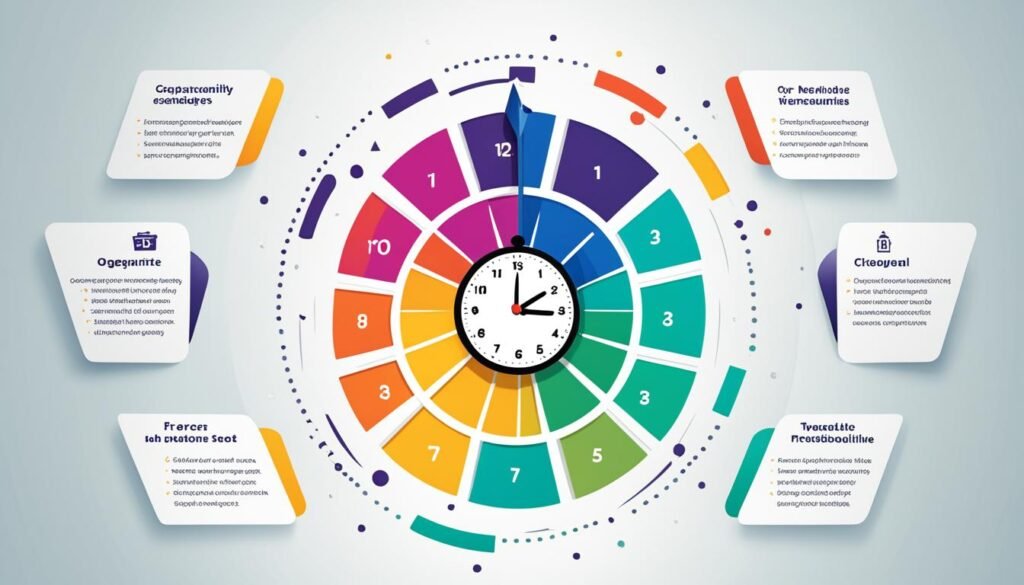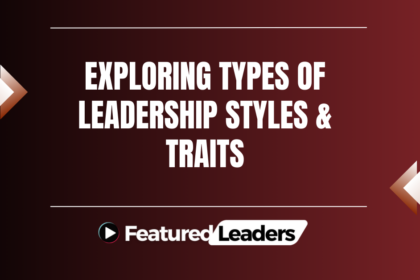Conflicts happen often in our lives, both at home and at work. Instead of avoiding them, we should learn how to handle them well. This includes understanding where conflicts come from, knowing the signs, and using strategies that can bring peace. By talking openly, listening actively, working together to solve issues, and making everyone feel valued, we can turn fights into chances to work better together. This boosts how much we can get done.
Key Takeaways
- Understand the root causes of workplace conflicts, including differing opinions, competition for limited resources, and unequal distribution of workload.
- Recognize the early warning signs of conflicts, such as increased tension, decreased communication, and decline in productivity.
- Implement effective communication and active listening strategies to foster empathetic understanding among team members.
- Utilize negotiation and compromise techniques to find common ground and mutually beneficial solutions.
- Establish clear policies and processes to address conflicts and promote a culture of respect and collaboration.
Understanding the Root Causes of Workplace Conflicts
Workplace conflicts start from different places, each with unique reasons and outcomes. Though they disrupt, they can spark positive change if tackled well.
Differing Opinions and Perspectives
Team members’ varied backgrounds and experiences can lead to differing opinions. This can drive innovation but also cause arguments. To avoid disputes, encourage everyone to share ideas freely and listen actively. This way, you can turn disagreements into steps towards progress.
Competition for Limited Resources
When there’s not enough of something, like money or time, it can create tension. This happens when different groups or departments fight for the same resources. By setting fair rules for resource sharing and promoting teamwork, you can ease these tensions. In the end, this helps with managing time and being more efficient.
Unequal Distribution of Workload
Bad feelings can grow if people think work isn’t fairly divided, making relationships tense. Using smart ways to organize tasks can make workloads more equal. This way, everyone can enjoy a good work-life balance and feel they’re being treated fairly.
Recognizing the Early Warning Signs
In today’s work world, spotting the early signs of trouble is key. It can prevent big problems from messing up how well we work together. When we deal with problems early, we keep everyone happy and thriving at work.
Increased Tension and Passive-Aggressive Behavior
If you see people getting tense and acting passive-aggressive, there might be a problem. Arguments and a feeling of tension are warning signs. Catching these signs early can stop things from getting worse.
Decreased Communication and Collaboration
When team members stop talking and working together, there’s likely a problem. They might not share info or avoid working as a group. Good time management and prioritization techniques are important. But if people stop communicating, it’s time to take action.
Decline in Productivity and Engagement
Long-lasting conflicts lower a team’s productivity and engagement. People get worried about the fights and lose focus. This can slow down their work and make them less interested. It could even lead to some leaving the team. So, handling conflicts is crucial for a team’s success.
Effective Communication and Active Listening
Effective communication helps solve conflicts at work. It means creating a space where people can talk openly and feel safe. Here, team members share their concerns and ideas freely, leading to better problem-solving.
Creating a Safe Space for Open Dialogue
It’s key to let team members speak without fearing judgment. Encouraging this helps. Managers and leaders should show they are open and caring. This sets the stage for everyone to have real and honest talks.
Practicing Empathetic Understanding
Listening actively to what others say and feel is important. It helps promote empathy and understanding. By valuing each other’s concerns, teams can find solutions together.
This way, they handle problems well. It makes their work together better and more peaceful.
Time Management: Negotiation and Compromise
Managing time well is key when solving work conflicts. It makes both sides look for ways to benefit each other. This helps everyone feel involved and responsible for finding answers together.
Finding Common Ground and Mutual Interests
When clashes come around, finding shared goals is vital. It means giving in on some things, finding middle ground, or spotting ways to work better together. Working towards common goals lets team members fix problems so that everyone wins.
Exploring Alternative Approaches and Solutions
It’s also vital to find new ways to tackle conflicts. This could include changing how tasks are done, shifting job duties, or thinking up fresh ways to use resources. Looking at things from different angles helps build a stronger grasp of the issue, leading to better solutions.

Mediation and Conflict Coaching
Sometimes, fights are too tough or full of emotions to be solved by talking alone. Mediation brings in a third person to help sort things out. This person stays neutral and helps everyone understand each other. They are great at keeping the peace.
Enlisting Neutral Third-Party Mediation
A neutral mediator makes a safe space for talking, where everyone feels respected. They can find the real issues, suggest different ways to solve them, and help get to solutions that work for all. This saves a lot of time and makes sure that the solutions are long-lasting. Employees also feel responsible for these solutions because they were part of creating them.
Providing Conflict Resolution Training and Support
Companies can also teach their staff ways to handle conflicts better. This includes training in active listening, talking with empathy, and solving problems together. Such work-life balance and task management strategies training can help avoid putting tasks off and missing goals. It also lessens the chaos of doing too much at once and being easily distracted, making work life more peaceful and productive.
Establishing Clear Policies and Processes
Prevention is key to solving conflicts at work. Setting clear rules and ways to deal with fights helps. It tells employees what to do if they have a problem. Rules about how fights can get bigger, how to report them, and what happens if someone breaks the rules are very important.
Having clear rules for how to manage time and tasks is also crucial. It makes sure fights don’t start often. These rules cover things like making sure work and life are balanced, managing tasks well, and stopping procrastination. They help make sure everyone does their part right, stopping fights over different working styles and goals.
Stopping fights before they get big is the best way. It’s done by making sure everyone knows the rules and understands their responsibilities. This way, problems are fixed in a good way, making the office a better place for everyone.
| Conflict Resolution Strategies | Benefits |
|---|---|
| Clearly Defined Escalation Protocols | Provides employees with a structured approach to address conflicts, reducing the risk of unresolved disputes. |
| Comprehensive Reporting Mechanisms | Enables early identification and intervention of conflicts, promoting timely resolution. |
| Disciplinary Procedures for Policy Violations | Upholds organizational values, accountability, and a culture of respect, deterring disruptive behaviors. |
| Streamlined Decision-Making Processes | Reduces the potential for conflicts arising from ambiguous or inequitable resource allocation and workload distribution. |

Fostering a Culture of Respect and Collaboration
Building a place where respect, empathy, and collaboration reign helps steer clear of conflicts. Yet, if they still surface, they can swiftly be dealt with. This is achieved when promoting diversity and inclusion, recognizing and rewarding positive conflict resolution behaviors, and when leaders set a shining example.
Promoting Diversity, Inclusion, and Teamwork
Organizations flourish by placing teamwork and mutual respect at their core. They turn conflicts into chances for growth, seeing them not as blocks to success. As diverse teams focus on shared objectives, they bring invaluable skills like Time Management, Productivity Hacks, Prioritization Techniques, and Schedule Optimization.
Recognizing and Rewarding Positive Conflict Resolution
Recognizing and applauding those who lead by example in Work-Life Balance, Task Management Strategies, and Procrastination Prevention adds strength to Goal Setting Methods, Multitasking Efficiency, and Distraction Minimization. It motivates the adoption of these practices among colleagues. This strategy not just supports positive ways to solve conflicts but also cultivates a work haven where everyone thrives.
Conclusion: Nurturing Workplace Harmony through Effective Conflict Resolution
Effective conflict resolution is key for a happy workplace. It encourages collaboration and respect. When we talk and listen, solve problems together, and respect everyone, we make our work better.
As work gets more complex, solving conflicts well matters even more. We can use time management and other methods to stay focused. This helps avoid problems and keeps us balanced at work.
Starting a peaceful work environment means understanding and respecting each other’s goals. If we see trouble coming, we should deal with it right away. This way, we turn fights into teamwork and help our colleagues shine.
FAQ
What are the root causes of workplace conflicts?
People’s different views and needs, fighting for resources, and unfair work expectations commonly lead to clashes at work.
How can I recognize the early warning signs of a brewing conflict?
Tensions rising, cryptic hostility, less teamwork, fewer conversations, productivity dropping, and unmotivated staff all signal a possible conflict.
What are the key strategies for effective communication and active listening in conflict resolution?
Key strategies include opening up dialogue, making a zone where everyone feels heard, and showing empathy. These are critical for solving conflicts by really listening to each other.
How can negotiation and compromise help resolve workplace conflicts?
It’s about finding ways everyone can agree on, looking at different solutions, and focusing on common interests. This approach can soften conflicts effectively.
When should mediation or conflict coaching be considered?
Mediation by a neutral party and offering specialized training can be great if direct talks fail. This is especially useful for big or emotionally heavy disputes.
How can clear policies and processes help prevent and address conflicts?
Setting up precise ways to handle conflicts, detailing how to report problems and what actions follow, is key to avoiding or solving them.
What role does organizational culture play in conflict resolution?
Having a caring, diverse, and inclusive workplace culture that values working together is vital. It can stop conflicts from erupting or help end them peacefully.
Source Links
- https://robertdavisrdheritage.com/mastering-workplace-harmony-strategies-for-effective-conflict-resolution-in-the-workplace/
- https://www.linkedin.com/pulse/mastering-workplace-harmony-effective-strategies-conflict-koche-2oqdf
- https://chiefexecutive.net/maintaining-harmony-the-top-conflict-resolution-strategies/






